This post may contain affiliate links. Please read our disclosure for more info.
Boat pose or Paripurna Navasana is an isometric core posture used in yoga and many other fitness disciplines. Not only does it target your abs to use its full strength but it also stabilizes the lower back, promotes focus towards the breath, and many other goodies for your body.
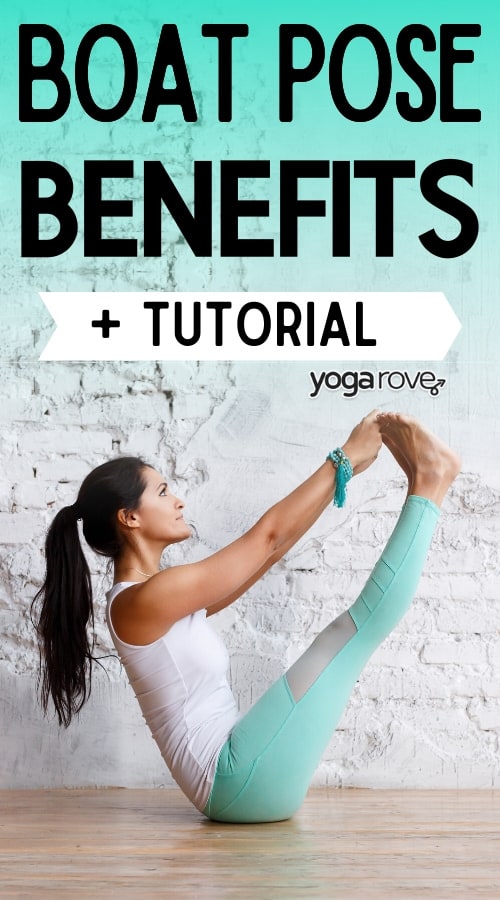
Boat pose prepares as well as strengthens your core so that you can advance in your yoga practice. If you have a yoga goal list and are working towards arm balances or inversions, you will need to learn the execution of Boat Pose with its variations and counter postures.
Benefits of Boat Pose
Paripurna Navasana is a strengthening yoga pose. It builds the core so you can have better control over your extremities in terms of the range of motion while sharing the workload of the lower back. It also reduces the risk of lumbar injury while toning your midsection, yet these positive outcomes only scratch the surface of what you can attain from this core stabilizer.
Muscular Benefits of Boat Pose
- Strengthens the abdomen
- Decreases the workload of the lumbar spine
- Allows for smoother and wider range of motion
- Prepares the body for more advanced arm balances
- Works the hamstrings and inner thighs (when one incorporates a yoga block)
Internal Benefits of Boat Pose
- Optimizes digestion
- Activates the thyroid and kidneys
- Activates the reproductive organs in both sexes by using Mula Bandha (also known as activating our pelvic floor)
Mental Benefits of Boat Pose
- Improves focus
- Improves breath work and pranayama
- Relieves stress
How to Prepare for Boat Pose
There are several sequences and yoga poses that you’ll want to do before going into Boat Pose. Why? Prepping your core serves as a warm-up which allows for a wider range of motion. You’ll need that before going into the full strengthening pose or you might end up compensating by using your lumbar spine.
Here are a few different ways you can warm up the body and necessary muscles required for Boat Pose:
- Sun Salutations/ Surya Namaskar A
- Yogic Bicycles
Below is a simple sequence made up of poses specifically focused on strengthening the core, loosening the hamstrings, and strengthening and opening the hip flexors. This is a great place to start to prep you for Boat Pose as a beginner!
Prep Sequence for Boat Pose
Below are 4 simple poses you can practice before coming into Boat to warm and wake up the necessary muscles needed to practice the pose properly.
1. Cat-Cow
Cat-Cow is a great way to warm up your spine to wake up your lower back and prepare the core for some hard work. Take your time going through the two poses slowly and feel out your body.
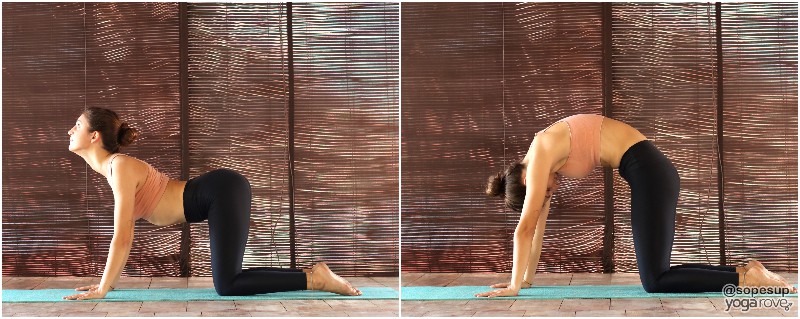
How to do Cat-Cow:
- Start on all fours in Tabletop with a neutral spine.
- Inhale as you drop your belly, arch your back, and tilt your gaze up towards the sky to come into Cow.
- On your exhale, pulled your belly in towards the spine as you round your back, tuck your tailbone, and curl your head in towards you as you push away from the floor with your hands to come into Cat.
- Cycle through these two poses for at least 3 rounds.
2. Downward Facing Dog
Downward Facing Dog helps you release tight hamstrings, activate your core, and open your chest, making it a great prep pose before Boat.
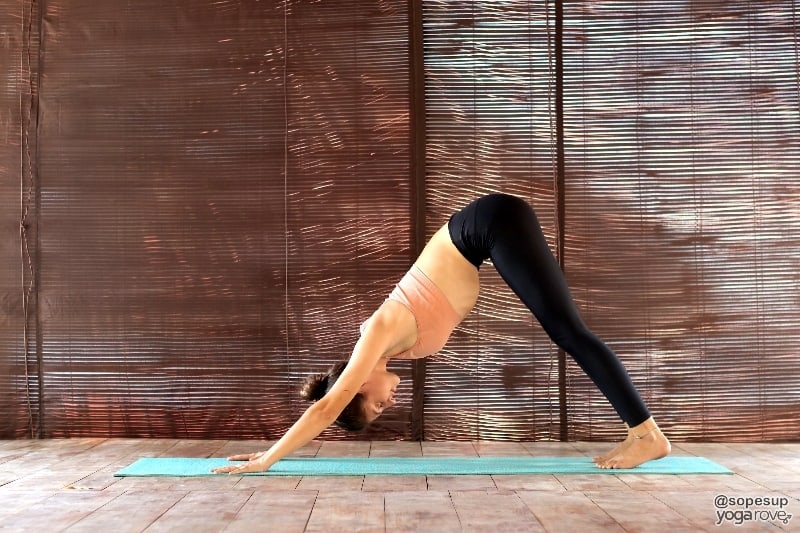
How to do Down Dog from Cat-Cow:
- Come back into a neutral spine from Cat-Cow. Then tuck your toes and push away from the floor with your hands as you send your hips up and back.
- Engage your arms and drop your shoulders away from your ears. Focus on engaging the core to help balance your weight.
- Pedal one leg at a time to help stretch and warm up your hamstrings.
- Stay here for 5 breaths.
3. Forearm Plank
Forearm Plank is an intense pose that focuses on the core. A lot of people find it much more intense than traditional Plank as being in your forearms intensifies the core work and also works the shoulders.
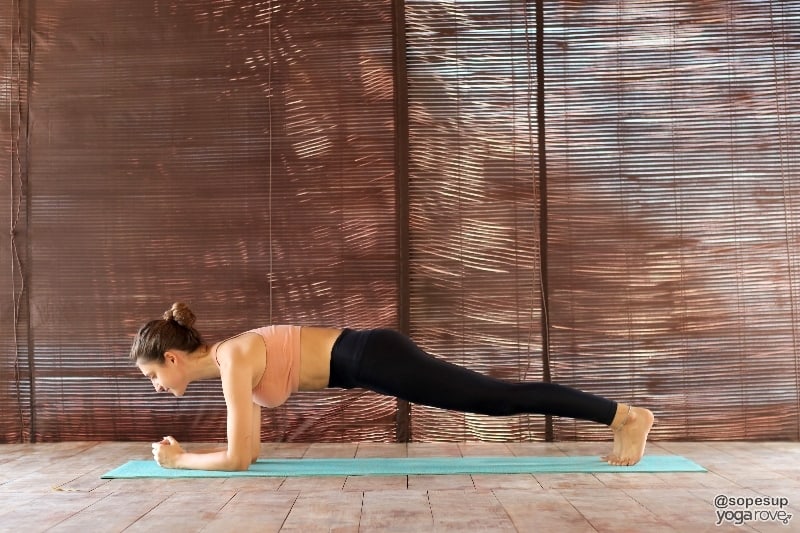
How to do Forearm Plank from Down Dog:
- From Downward Facing Dog, come up onto your tippy toes and shift your weight forward to come into Plank Pose.
- Engage your core and ensure your body is in proper alignment, being sure your tailbone is not too high into the air or that you pelvis is not sinking too much towards the floor.
- One at a time, come onto your forearms maintaining the same alignment as in Plank. Be sure not to let your ears sink towards your shoulders by pushing your forearms into the ground.
- Stay here for 5-10 breaths.
4. High Lunge
High Lunge helps you open up your hips which is very important in Boat Pose. In order to maintain proper alignment and balance your weight evenly, you need to build both strength and flexibility in the hip flexors.
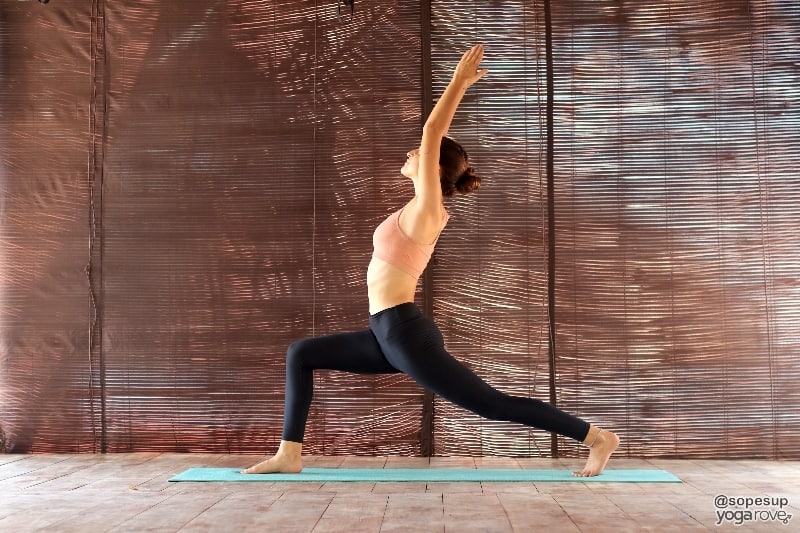
How to do High Lunge from Forearm Plank:
- From Forearm Plank, come to the floor onto your knees, then bring your right leg forward in between your hands. Tuck your back toes and lift your back leg off the ground.
- Engage both legs and use your core to lift your upper body upright, extending your hands up towards the ceiling.
- Make sure your hips are square by pulling your right hip back and left hip forward. Keep the core engaged and try to sink into the front leg.
- Stay here for 5 breaths then repeat on the other side.
Or try out this simple seated warm-up we created that focuses on engaging and waking up the core (free printable included in the post!)
How to Practice Boat Pose
Once the body is warmed up and prepped for practicing this strengthening pose, it is important to understand how to execute it properly to avoid compressing the spine and straining the back. Below is how to do Boat Pose step-by-step.
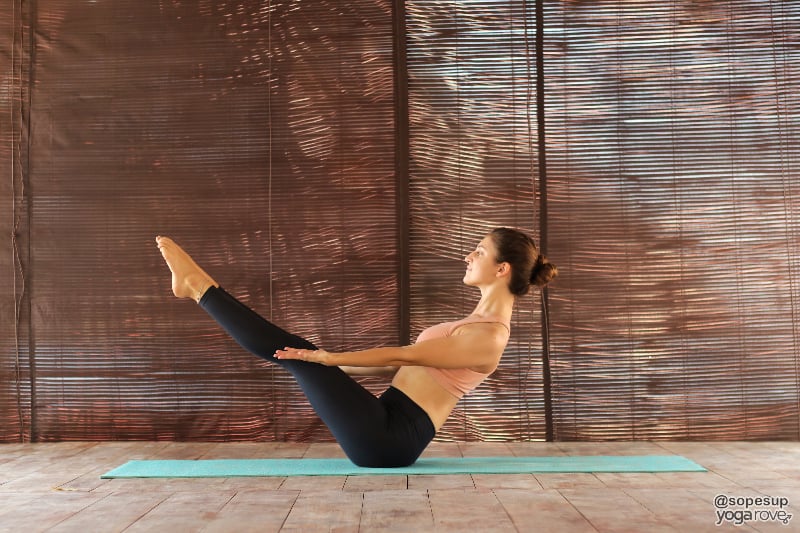
How to practice Boat Pose step-by-step:
- Start in Staff Pose, sitting with a tall spine and both feet straight out in front of you, hands at your sides flat on the ground.
- Bend your knees and bring your feet towards you so the soles rest flat on the ground. Make sure you are still keeping a tall spine!
- Gently move you hands slightly backwards by your hips and lift one leg up at a time as you lean back just enough to feel your core engage. Keep both legs bent at first and focus on finding a good balance on your sits bones while you are still able to keep a straight back. Lift your hands off the ground and bring them behind your knees.
- You can choose to stay here and bring both hands along your sides to increase the intensity, or even decide to straighten both legs to really intensify the core and hip flexor workload.
- Slowly come out of the pose by bending and lowering your legs to the ground.
Common Mistakes in Boat Pose
In order to gain the full benefits from Boat Pose and avoid strain or injury, it is important to know the common mistakes to avoid! Many students become very focused on the shape of the pose and not the foundation it’s based on, and therefore do not execute it to their needs.
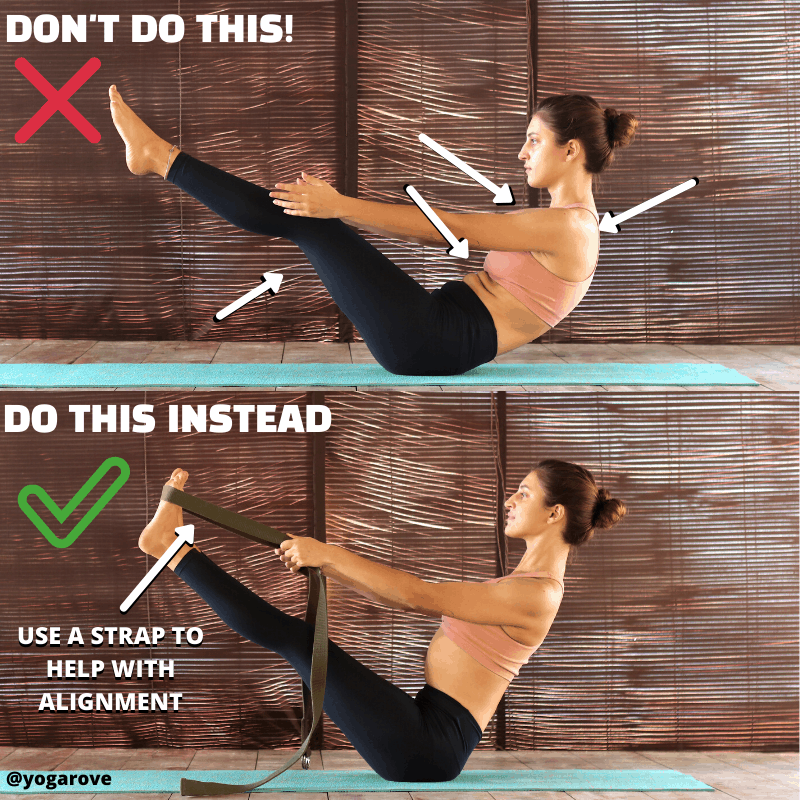
Here are some of the tendencies to watch out for while practicing Boat Pose:
- Shrugging the shoulders: This normally happens when you feel you are about to fall out of the pose. When you feel this, round out your shoulder blades and engage the core.
- Collapsing the chest: This commonly occurs when people shrug their shoulders and don’t engage the core. The spine naturally begins to round and the chest collapses downward. Fix this by inhaling and pulling the shoulder blades back to touch while focusing on re-engaging the core.
**If balance is an issue causing this, a yoga strap can come in handy, which we will go over below.
- Not engaging the abdominals: This happens when you get tired and you let your stomach hang loose. Simply re-engage the core to combat this!
- Sticking your butt out: This is the other thing that happens when you don’t engage the core. Your butt sticks out because your lower back is taking too much of the workload to keep you in the pose. Engage the core and re-align your tailbone to find that point of equilibrium.
Variations and Modifications for Boat Pose
This pose is known to be very versatile and dynamic. Working the core means we need to touch on the different layers of the abdominal muscles. By either making this posture more or less challenging it becomes easily accessible to all levels of fitness.
Challenging Variations
After you feel comfortable in Boat, feel free to try out some of these fun variations to challenge your core strength and balance. Keep in mind you can do all of these variation WITH the modifications as well!
Boat to Half Boat Pose or Half Boat to Low Boat
To intensify your core and hip flexor strength, play with your legs from Full Boat to Half Boat or alternate between Half Boat and Low Boat. Both variations challenge your balance and stability, and will give your core and hip a great workout!
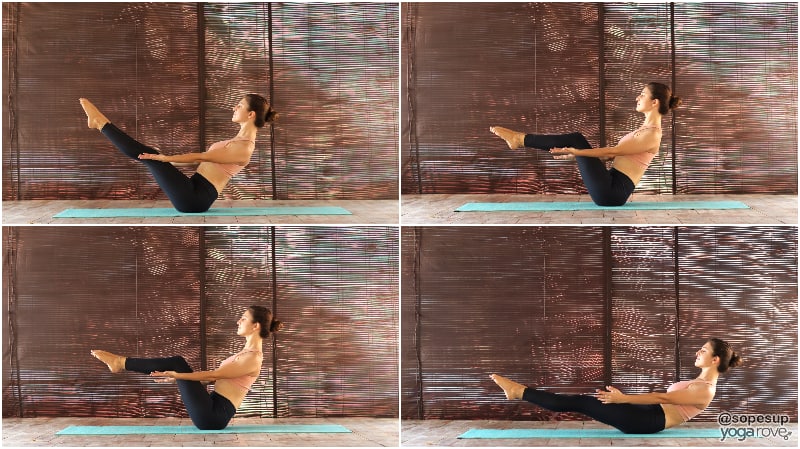
Twisting Boat Pose or modified Russian Twists
This is like your intensified Russian Twist. Instead of keeping your legs bent, try keeping them straight (while maintaining proper alignment!) and slowly twisting from side to side using your core.
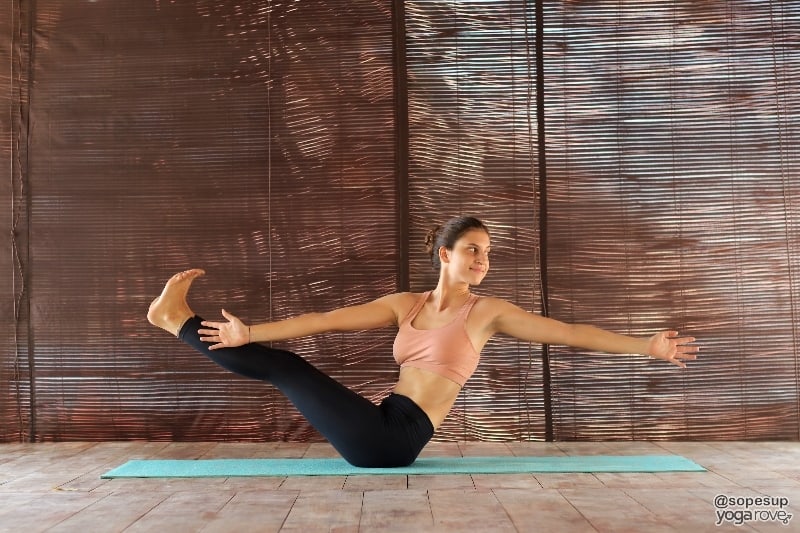
Squeezing a block between the shins or thighs
Squeezing a block between your legs not only helps maintain proper alignment by forcing your legs to squeeze in towards each other, but it also causes your core to engage even MORE. Feel free to try this with Half Boat as well!
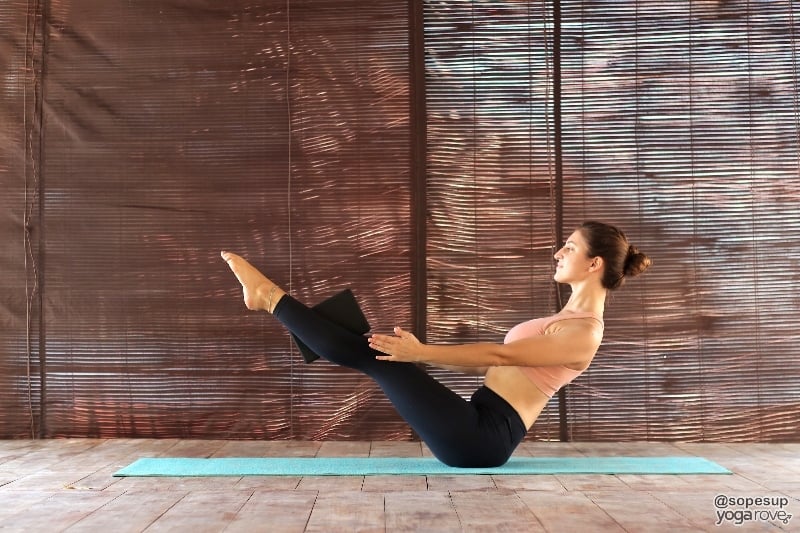
How to Modify Boat Pose
If you don’t feel comfortable in Full Boat, don’t force it- when you do this you almost always will be practicing with poor alignment. Instead, use a hand prop or one of the below modifications to give you the same benefits of the pose!
Bend and hold the legs from behind
If you have tight hamstrings or hip flexors, you may find it difficult to hold your legs up in this pose. This can cause you to round your back and hunch your shoulders in order to maintain equilibrium. To avoid this, place your hands behind your legs to assist with keeping your legs lifted.
*Bonus: this will also assist in keeping your chest lifted too!
Important: Don’t let holding your legs allow your spine and core to relax! You should still be lifting through your chest and engaging the core. If you find you can’t do this with this modification, try one of the others below.
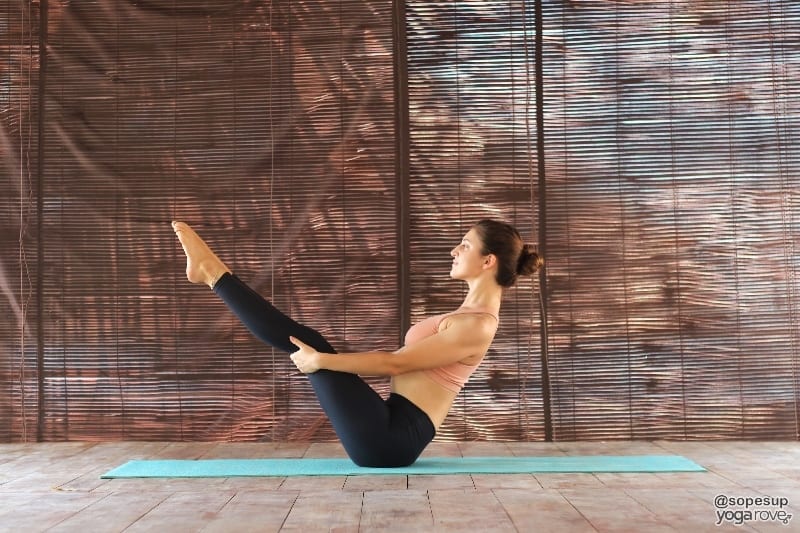
Boat pose with knees bent (Half Boat)
Half Boat is a common modification for Boat that is also practiced in many other forms of exercise. Bending the knees helps you balance more and takes the stress off your hip flexors and hamstrings.
Important: Just because your legs are bent, does NOT mean they should not be engaged! Still keep both legs activated and either point or flex your toes actively.
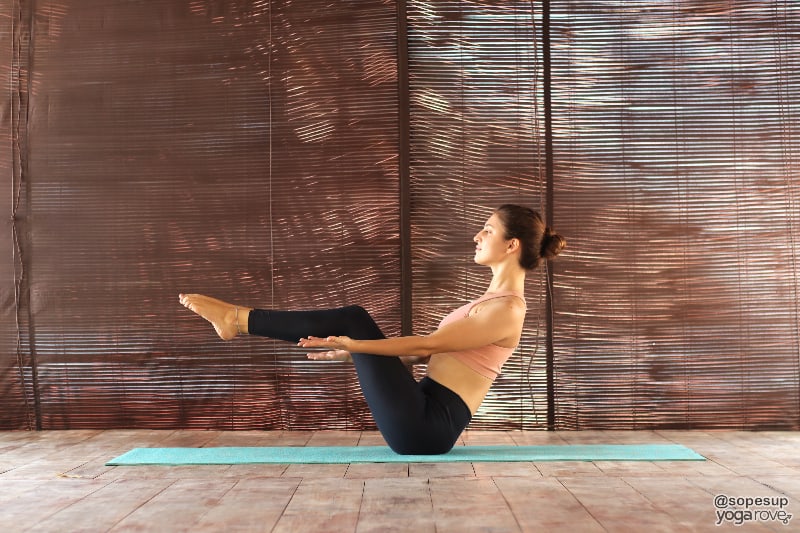
Boat pose with feet against the wall
Placing your feet against the wall in Full Boat can help you maintain a sense of balance and focus on engaging your core if you have weaker hip flexors.
Important: Don’t let your back round in the modification. If you find you’re unable to maintain a straight back with your legs straight, simply come into Half Boat.
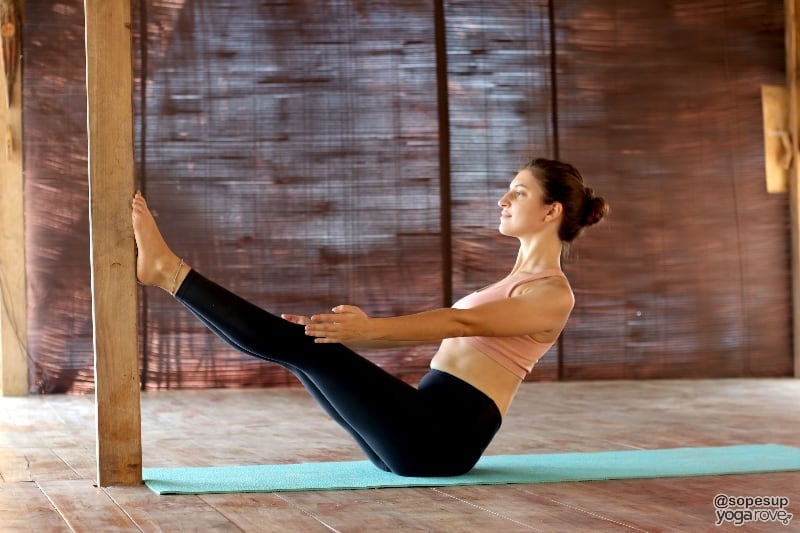
Boat Pose with a strap around the feet
Yoga straps aren’t only useful for providing length in tricky poses, they also provide support in maintaining proper alignment when you need it. Placing a strap around your feet help you better control how high your legs lift without overly stressing your abdominals.
Important: Be careful not to let the strap pull you shoulders forward, causing your back to round. Make sure to activaly engage your core and lift through your chest throughout the pose.
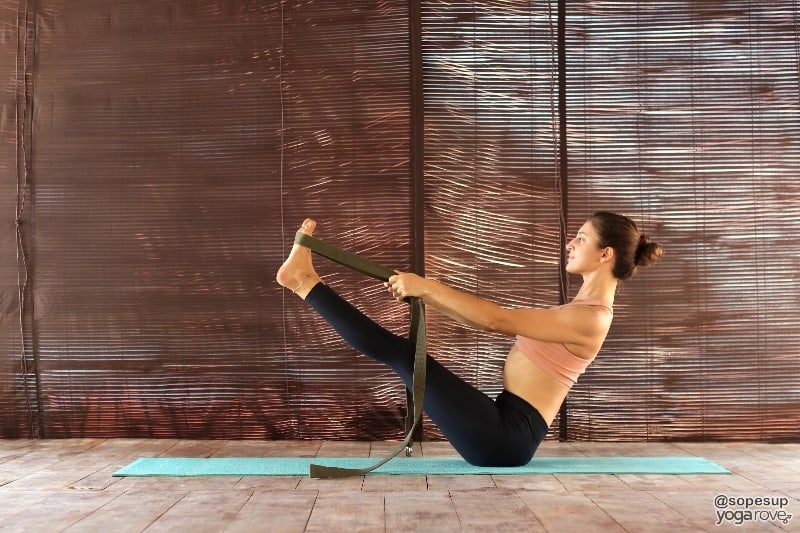
Counter Poses for Boat Pose
After practicing Boat Pose, it’s important to follow it with necessary poses to relax and stretch the muscles you actively used to create balance in your body. To make a counter sequence, we will use poses that change our bodies’ direction and stretch without strain.
1. Bound Angle
Bound Angle is a great pose to practice after Boat as it gently stretches the hip flexors and relaxes the mind and body after practicing such an intense strengthening pose.
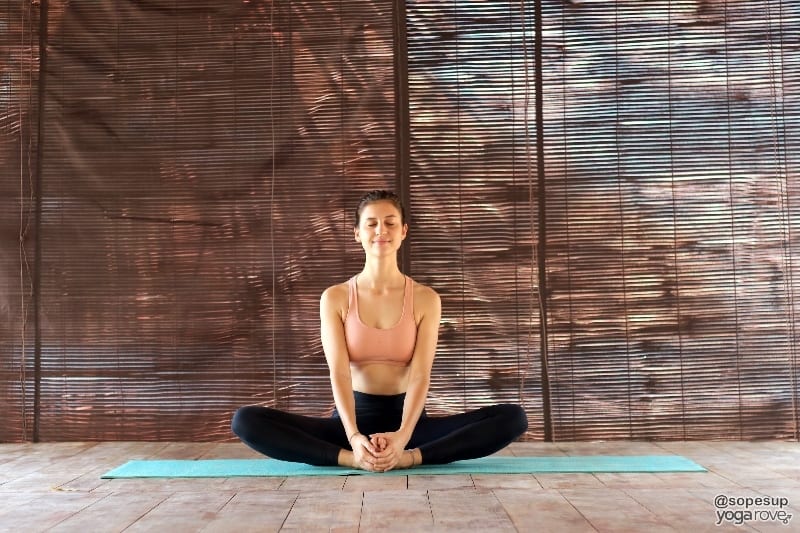
How to do Bound Angle from Boat:
- From Boat, find a comfortable seat on the ground. If you find it hard to sit up straight, place a blanket or block underneath you.
- Bring the soles of your feet together to form a diamond shape with your legs. If you feel a good stretch here, stay. You can also choose to bring your feet in closer towards your to deepen the stretch.
- You can choose to stay upright in this stretch or fold forward to go deeper and stretch the spine as well.
- Stay here for 5 breaths.
2. Bridge
You just intensely used your core in Boat and the prep poses, so it would be beneficial to use the opposing muscles as you do in Bridge. Although this pose does activate the core, it also works the glutes and legs while gently opening the chest in a relaxing way.
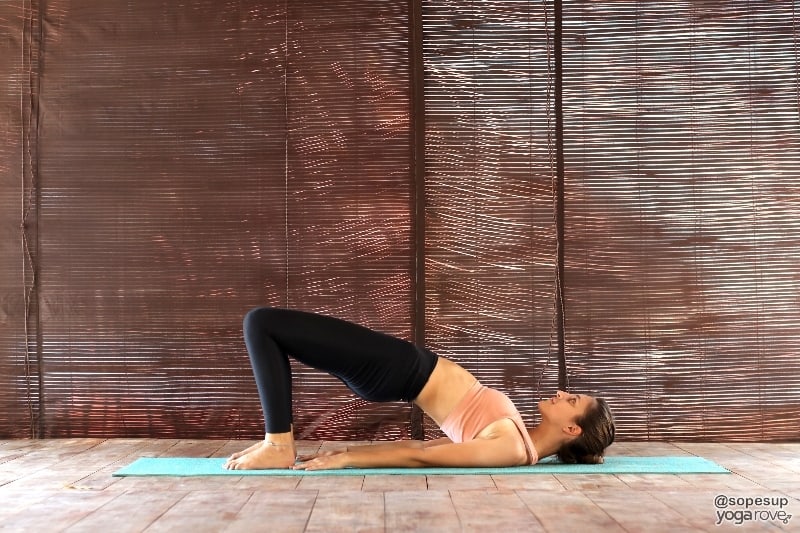
How to do Bridge from Bound Angle:
- From Bound Angle, slowly roll onto your back.
- Bring your legs out in front of you with your feet planted on the floor with feet hip distance apart. Bring your hands by your sides face down.
- Gently lift just enough to shimmy your shoulder blades a bit more underneath you.
- Take a deep breath, then on your inhale, lift your pelvis off the ground as much as you can, feeling the energy in your legs and glutes.
- Hold for 3-5 breaths then slowly come to the ground one vertebrae at a time.
Other counter poses you can practice after Boat Pose:
- Camel/ Utrasana
- Rabbit Pose/ Sasangasana
- Happy Baby/ Ananda Balasana
- Supine Spinal Twist/ Supta Matseyendrasana
Contraindications for Boat Pose
There are certain conditions and ailments that should make you extra cautious and even avoid practicing Boat Pose. Below is a list of conditions to make you cautious of the pose or take a modification as needed.
- Knee, hip, neck or shoulder injury
- Any recent abdominal surgery
- Indigestion
- Inner ear problems
- Headache
- Sinusitis
- Menstruation
- Pregnancy
- Heart problems
- Low blood pressure
- Osteoporosis
As you grow stronger this will become an easier pose for you. You will also notice that some arm balances will start being more accessible in your practice. All of this is because you worked on your foundation!
Boat pose is usually not the most glamorous pose that people boast of, yet it is an extremely important pose to practice in order to help you develop your physical practice.
Yoga is a process for your mind, body, and spirit. There is no “move ahead two spaces” or a ladder that suddenly takes you into inversions. You have to go through everything on the board. What many people forget is that going through the entire journey is the fun part. You experience each milestone to the fullest and appreciate every step along the way.




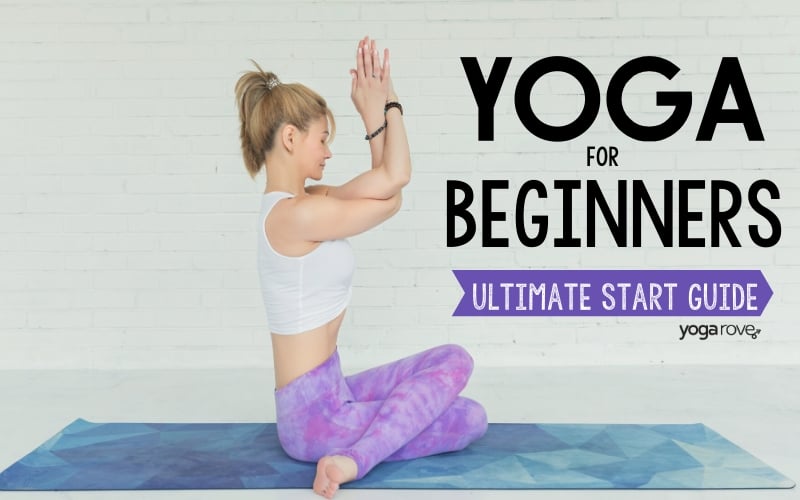


So glad you found it helpful Elisabeth! Video will definitely be an upcoming project! 🙂
I would add Osteoporosis to your contraindicated list.
Hi Christine, added it just now- thank you 🙂